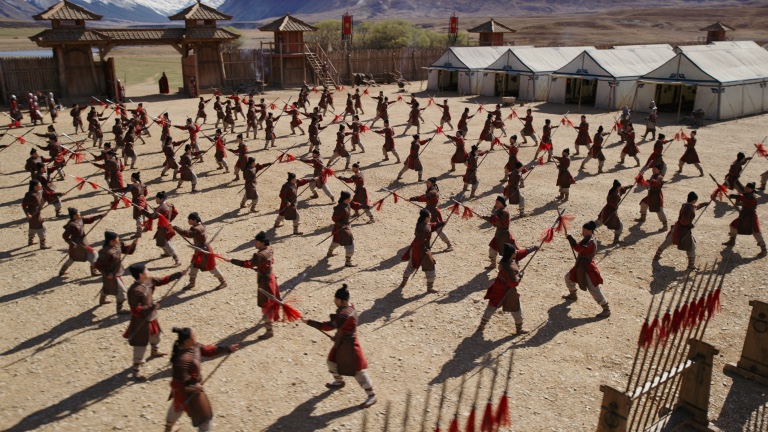
How did he approach the siblings’ first Western, then? As with “Fink,” was there a kind of “meta” level of filmmaking to start with? Did he, in other words, spend time looking at westerns?
“We were going for something historically correct,” he says – bearing out recent comments here by production designer Jess Gonchor, and from that, he proceeded “more instinctively, really” when deciding how the film should look. Or more specifically, how its look should either absorb, or reflect, the various hues of light.
“It was important that the costumes and sets were historically accurate,” he continues. “We didn’t have to enhance it, really.” Nor, apparently, did they have to talk about it much. “We hardly ever had a conversation about lighting,” he reports.
The process to arrive at a look, or texture, for the film came through “scouting together and having dinner,” though as wonderful a modus vivendi as that is, he reiterates that “so much comes from the locations and sets.”

The brothers “wanted the courthouse to feel sort of gloomy,” Deakins recounts. Mattie comes in, hearing the increasingly problematic testimony of someone on the stand. “As she comes in, it’s revealed it’s Rooster. We talked about the idea of hard sunlight coming into the courthouse,” but instead, it was the use of seeming source-light – oil lamps – that allowed for the visual revelation, shadow-into-light, to follow the characters’ encounter.
Deakins shot on film, but he’s using an Arri Alexa now, for a non-Coen project , and suddenly wondering “why I would go back to film.”
Would he have shot True Grit digitally, if he could have? He considers “all those big night scenes” they shot, especially out in the forest once Rooster & co. were in the hunt for the killer of Mattie’s father. They were “hard and expensive to do,” with the lighting set-ups, and digits might have allowed more leeway. Or perhaps somewhat shorter nights.
But even without an Alexa, there was, of course, always the DI, which he especially glad to have here. “Where it really shines on a film like True Grit is on the day scenes,” he says, since they “couldn’t always wait” for the light they wanted. Such waiting would’ve been “impossible on the kinds of budgets we were working on.”
“It’s not easy. But it’s easier, to match those kinds of shots,” he observes. All part of the usual pluck perseverance, or dare we say “grit,” associated with a Coen Bros. shoot.





